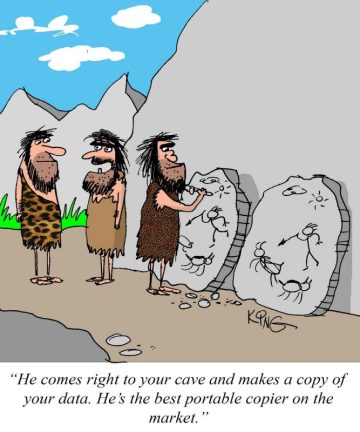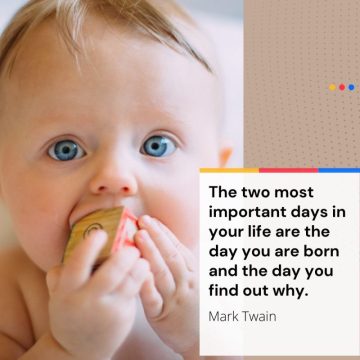Business
Hiring practices: 3 tips for choosing the right interview questions
If you want to hire the best candidates for your team, asking the right interview questions is key. Here are three tips for creating questions that will help you identify the ideal people for the positions you need to fill.
1. Assess job-related skills
Generic questions like “what’s your greatest strength?” don’t provide a lot of insight. In fact, many candidates come prepared with generic answers to such queries, and these responses won’t tell you much about their skills or personality. Therefore, it’s important to include questions that are directly related to the job.
2. Assess attitude and character
As an employer, you probably know that soft skills are just as important as technical ones. Therefore, don’t forget to ask the candidate questions that reveal their ability to collaborate, resolve conflicts, and respect authority.
3. Assess objectively
Don’t let your feelings cloud your judgment. It can be all too easy to fall in love with a candidate’s charm and personality. However, you shouldn’t lose sight of the skills and traits an employee needs to be a good fit for the job.
Finally, remember to stick to your plan, take notes and make a well-informed decision.
Business
Can A New Attitude Help You Live A Better Life?
Adopting a new attitude can be a transformative step towards living a better life. If you’re feeling stuck or dissatisfied with your current situation, a shift in mindset can open up new possibilities and opportunities. This change doesn’t imply becoming entirely different but evolving into a more positive, happier version of yourself while embracing life’s imperfections.
Embracing Positivity for a Better Life
- Acknowledgment of Current State: Realizing that you’re not content with where you are is the first step towards making a change. It’s essential to accept this without judgment to move forward.
- Willingness to Change: Change begins with a willingness to alter your lifestyle and habits. Without this readiness, staying trapped in a cycle of dissatisfaction is inevitable.
- Impact of Mindset: Your thoughts and actions have a direct effect on the quality of your life. By replacing negative thinking with positive actions, you initiate a change in your life’s trajectory.
- The Choice of Happiness: Happiness is indeed a choice, albeit not always easy. It involves actively seeking joy in everyday life and making decisions that align with one’s well-being.
- The Challenge of Positivity: Maintaining a positive mindset requires effort and is not about ignoring life’s challenges. It’s about acknowledging the good alongside the bad, appreciating what you have, and finding joy in the small things.
- Realistic Optimism: It’s crucial to be optimistic while remaining grounded in reality. Accepting that not every problem will vanish overnight allows you to focus on what can be improved and appreciate the progress made.
- Shifting Perspective: Changing your attitude involves a new perspective on life. It’s about deciding to focus on the positive, even in the face of difficulties, and understanding that your viewpoint significantly influences your experiences.
- Living in the Present: Worrying excessively about the future can rob you of present joys. Focusing on the here and now can significantly improve your mood and outlook.
- The Role of Attitude: Your attitude shapes your experiences. A negative mindset can lead to a life filled with pessimism and missed opportunities, while a positive outlook can make life more enjoyable and open doors to success.
- Action Steps: To cultivate a positive attitude, start by eliminating negative thoughts and focusing on the positive aspects of your life. It might not be an overnight change, but with persistence, you’ll notice significant improvements in your happiness and life satisfaction.
Remember, adopting a new attitude isn’t about denying the challenges or pretending everything is perfect. It’s about choosing to focus on the positives, learning from the negatives, and making the most out of the life you have. This approach doesn’t guarantee a life free of problems, but it does promise a more fulfilling, joyful, and enriched experience.
Business
Analyzing the Impact of the Gig Economy on Workers and Employers
The Gig Economy: A Double-Edged Sword for Workers and Businesses.
The gig economy, defined by its short-term contracts and flexible job nature, has reshaped the traditional work environment. While it offers various benefits, it also comes with its own set of challenges for both workers and employers.
Pros and Cons for Workers: For many, the gig economy epitomizes flexibility and autonomy. Workers have the freedom to choose their working hours and locations, which is ideal for those seeking a better work-life balance or juggling multiple commitments. Moreover, gig work provides opportunities to diversify skills across different projects and industries, potentially enhancing future employability and personal development.
However, this flexibility comes with drawbacks. One significant challenge is the lack of income stability. Gig workers often experience fluctuating work availability, leading to uncertain financial conditions. Moreover, they usually miss out on benefits typically provided to full-time employees, such as health insurance and retirement plans. The nature of gig work can also lead to isolation, potentially impacting mental health and limiting opportunities for professional networking and growth.
Pros and Cons for Employers: From an employer’s perspective, the gig economy offers cost efficiency and a broad talent pool. Hiring gig workers for specific tasks or projects can reduce overhead expenses associated with permanent staff. This model also allows businesses to adapt quickly to market changes by scaling their workforce as needed.
Conversely, challenges include difficulties in building a consistent company culture and managing a remote workforce. The transient nature of gig work can also make it challenging to develop long-term strategic goals and foster a sense of team cohesion and loyalty.
Finding the Right Balance: The gig economy, with its mix of flexibility and uncertainty, requires both workers and employers to consider their priorities and strategies carefully. Whether seeking short-term projects or long-term employment, consulting with an employment agency can provide valuable guidance in navigating this evolving landscape.
Business
Incorporating Neurodiversity in the Workplace: Strategies for Employers
Embracing Neurodiversity: A Pathway to Innovation and Adaptability in Business.
Neurodiversity, the concept that recognizes and values neurological differences, is increasingly being seen as an asset in the modern workplace. Embracing neurodiversity not only fosters an inclusive environment but also drives innovation and adaptability. Here are five hiring practices that can help integrate neurodiversity into your workforce:
- Educational Initiatives: The first step in embracing neurodiversity is understanding it. Educate yourself and your hiring team about the various aspects of neurodiversity and its potential impact on the workplace. Utilize available online resources and training programs to build awareness and sensitivity.
- Inclusive Job Descriptions: Review your job descriptions to ensure they are inclusive and don’t inadvertently discourage neurodivergent candidates. Avoid ambiguous terms like “team player” or “multitasker” unless you clearly define what these entail. Be mindful of the language and requirements that could be limiting.
- Diverse Recruitment Channels: Expand your recruitment efforts to include channels that cater specifically to neurodivergent individuals. Collaborate with organizations focused on neurodiversity and participate in related events and conferences to connect with potential candidates.
- Mitigating Unconscious Bias: Acknowledge and address unconscious biases in the hiring process. Implement practices such as blind resume reviews and structured interviews. Involving multiple interviewers and asking open-ended questions can provide a more holistic view of each candidate.
- Constructive Feedback for All Applicants: Providing clear and constructive feedback to all interviewees, including those not selected, can be invaluable, especially for neurodivergent candidates. This feedback can guide them in understanding the selection process better and improving their future applications.
By adopting these practices, businesses can tap into a broader talent pool, benefit from varied perspectives, and foster a more inclusive and innovative work culture. For further guidance on integrating neurodiversity in your workplace, consider consulting with occupational therapists or neurodiversity experts.
Business
Easing Wage Growth: A Silver Lining for Small Businesses
The American small business landscape is on the brink of a significant shift. As wage growth begins to slow down, small businesses, which have long struggled to compete with larger corporations in attracting talent, may find themselves in a more advantageous position.
Over the past few years, the labor market has been exceptionally competitive, making it challenging for small businesses to match the salaries offered by their larger counterparts. Holly Wade, the executive director of NFIB’s research center, notes that many small businesses have missed sales opportunities due to understaffing.
As of September 2023, businesses with one to nine employees accounted for around 21% of all job openings, a 20% increase from the previous year, indicating their eagerness to hire. This surge in job openings reflects the readiness of small businesses to capitalize on market opportunities, albeit hindered by their struggle to fill these openings. In comparison, job openings in larger firms have seen a contraction.
The year 2023 witnessed a near-record high in applications for employee identification numbers, second only to 2021. The COVID-19 pandemic was a critical factor during this period, leading to many businesses closing down and sparking a wave of new small businesses, particularly in sectors like meal and drink delivery.
The slowing wage growth could herald a new era of prosperity for small businesses. The Bureau of Labor Statistics reported a mere 0.2% wage growth in September 2023 from the previous month and a 4.2% annual increase. This deceleration in wage increases might not only open up more opportunities for small businesses to attract talent but could also play a role in easing inflation, which has significantly impacted cash-strapped small enterprises.
The current economic climate, marked by slowing wage growth, presents a potential boon for small businesses. This shift could enable them to attract and hire talent more effectively, potentially sparking a new wave of growth and opportunity in the small business sector.
Business
The Hidden Costs of Absenteeism in the Workplace
In a revealing insight into the American workplace, reports highlight a staggering $225 billion loss annually due to absenteeism, as per the Centers for Disease Control. This figure sheds light on an often-overlooked aspect of business operations – the cost of employees not showing up for work.
Absenteeism is not about the usual leaves like vacations but refers to unscheduled time away from work. While some of these absences, like those due to illness, are unavoidable and even advisable, excessive absenteeism is a red flag for businesses. It’s not just about the direct loss in productivity; it’s also about the ripple effect it has on the morale and workload of other employees.
Taking a sick day when necessary is actually beneficial in the long run. An employee with a severe head cold is better off resting at home, both for quicker recovery and to prevent spreading the illness to others. It’s an important aspect of workplace health management, considering that sick employees can lose over a quarter of their productivity.
However, the problem arises when the absentee rate crosses the norm for a particular industry. This situation signals deeper issues in the workplace environment or culture. To combat this, companies can adopt strategies like promoting basic health measures such as regular hand washing and exercise. Building a company culture that values hard work and dedication is also crucial.
Interestingly, one approach to discourage unnecessary absences involves rescheduling rather than redistributing work. If an employee calls in sick, it might be more effective to pause their tasks instead of overburdening other staff members. This strategy not only reduces stress on other employees but also acts as a deterrent against taking leave without genuine reasons.
While absenteeism is a natural part of the work environment, its excessive occurrence can be a significant drain on a company’s resources and morale. Addressing it requires a combination of promoting health, fostering a responsible work culture, and smart management of work responsibilities.
Business
Breaking the Mold: How to Elevate from Average to Exceptional Success
In a world where the average is often the norm, breaking away from the crowd to achieve exceptional success requires a shift in mindset and approach. Success doesn’t come by following the well-trodden path; it’s about creating your own. This concept is not just for the ambitious entrepreneur but for anyone aiming to excel beyond the ordinary in any aspect of life.
To distinguish oneself from the average, it’s crucial to observe and learn from the top achievers. These individuals, whether in business, fitness, or personal relationships, do not settle for mediocrity. They push boundaries, innovate, and consistently strive for excellence. It’s not about doing different things but doing things differently. The essence of success lies in the approach and the relentless pursuit of goals with a unique and dedicated strategy.
An average person’s day might be filled with activities that offer comfort but little progress toward achieving significant goals. In contrast, successful individuals prioritize their time meticulously, focusing on activities that propel them closer to their objectives. This could mean sacrificing leisure time now for long-term gains. It’s about making every moment count, whether it’s refining a business idea, enhancing personal skills, or building meaningful relationships.
Success doesn’t come from imitation but from innovation. While it’s easy to follow the crowd, true achievement comes from thinking outside the box and daring to be different. This means not just setting goals but setting ambitious ones that challenge your capabilities and push you out of your comfort zone. The journey to success is paved with challenges, and overcoming them requires creativity, resilience, and a willingness to take risks.
The quest for success is a continuous journey of growth and evolution. It involves setting and surpassing personal boundaries, constantly seeking new challenges, and embracing lifelong learning. Understanding your strengths and weaknesses is crucial, as it allows you to focus your efforts on areas where you can excel while also working on your limitations.
Success is as much about mindset as it is about action. Successful individuals think in terms of possibilities and opportunities rather than focusing on obstacles. They view setbacks as learning experiences and are resilient in the face of adversity. This positive outlook, combined with a clear vision and unwavering determination, is what sets them apart from the average.
Transcending mediocrity to achieve extraordinary success requires a deliberate and focused approach. It’s about doing what the average person won’t do, embracing innovation, and maintaining a growth mindset. Remember, success is not a destination but a journey, and it’s the small, consistent steps toward your goals that lead to significant achievements.























































































